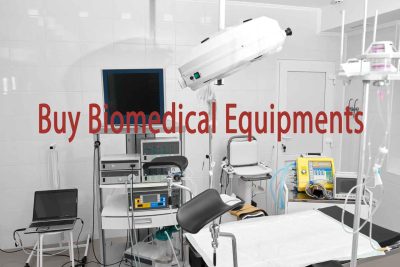If you want to expand or even start your automation and AIOps strategy, you’ve come to the right place. In this blog post, you’ll discover many practical next steps to help you better understand, convince, and begin implementing AIOps in your organization. The case for introducing artificial intelligence (AI) into IT operations is compelling, with tangible benefits and strategic use cases.
Let’s start with a basic principle: As IT systems become more complex and interconnected, automation becomes the most important tool at your disposal. We define automation as the use of technologies, programs, robotics, or processes that produce results with minimal human intervention and at a scale that exceeds human capabilities.
Now let’s look at how automation applied to IT drives better business outcomes in three key areas and what every beginner needs to know to get started.
1. Improve application and system performance through observability
‘s AI-powered observability solutions provide advanced monitoring to provide the context needed for faster incident resolution. Traditional monitoring tools can provide metrics and data, but are often unable to provide a complete picture of system behavior. Observability, on the other hand, focuses on collecting real-time data, logs and traces to create a holistic picture of the IT environment.
What beginners need to know about observability:
Observability is not an evolution of Application Performance Monitoring (APM).APM ensures debugging of the application, while Observability helps understand the application. Watch the video: APM and Observability.
Observability uses advanced artificial intelligence algorithms to quickly analyze massive amounts of data and identify patterns and anomalies.
ADS

‘s observation tools detect conditions that you may never have known about or shouldn’t have looked for, and then monitor their relationship to specific performance issues to analyze the root cause and find a fastersolution.Read the company guide.
Using observability early in development is good because it allows DevOps teams to identify and fix issues in new code before they impact the end user.
With the ability to observe you can develop automatically. For example, you can specify instrumentation and data aggregation as part of your Kubernetes cluster configuration and start collecting telemetry data from startup to shutdown.
Observability benefits systems of all sizes by proactively monitoring critical components and ensuring early anomaly detection.Discover the myths about observability.
2. Cost optimization and control through automation of activities
As modern IT applications and systems become increasingly complex, many cloud users continue to fall into the familiar habit of over-committing resources to mitigate performance risks. Yet nearly a third of companiesbelieve they have wasted their cloud spending. Automated operations powered by AIOps can help you abandon this costly approach and optimize your IT infrastructure, resource allocation, and cloud usage. By analyzing historical data and real-time metrics, AIOps can help you make intelligent resource deployment decisions and ensure you can scale up or down asneeded.This allows you to ensure application performance at the lowest possible cost.
What beginners need to know about automated processes:
AIOps can help reduce unnecessary infrastructure costs by identifying unused resources and recommending their optimization or shutdown. Start by rethinking your cloud operations.
By automating resource allocation, you can avoid manual errors and optimize the overall performance of your IT systems.
A cloud cost optimization platform enables continuous, real-time automation of critical tasks at a level that cannot be achieved by humans, regardless of their skills.
FinOps (Finance + Operations) is an emerging financial management platform that can be integrated with operational automation to drive cost savings and accelerate innovation.Watch the video: FinOps for reliable cloud automation.
‘s AI-powered solutions, which enable automated operations management, can also help create more sustainable IT by reducing waste. Read the guide: Accelerating FinOps and Sustainable IT.
3. Faster incident management and resolution
Incident management is an essential part of IT operations.The speed at which problems can be identified and resolved (Mean Time to Resolution or Mean Time to Resolution (MTTR)) is often the difference between IT emergency drills and customer satisfaction. AIOps uses AI algorithms and data analytics to automate incident detection, analysis, and resolution.
Implementing an AIOps platform is an important first step for any organization. For example, AIOps platforms can monitor server logs and network data in real-time, automatically detect patterns that indicate an incident and trigger an alert for the IT team. This proactive approach helps IT teams respond quickly, minimize disruptions and improve customer satisfaction.
ADS
What beginners need to know about incident management and AIOps platforms:
Traditional incident management, which requires time and manual effort, is quickly being replaced by an AI-powered AIOps platform. Read AIThority’s article on incident management.
This AI-driven approach transforms incident management from reactive to proactive (and even preventative). Download the Gartner market guide.
AIOps platforms can ingest and correlate data from disparate sources to provide a comprehensive view of the entire IT landscape.
users can share this comprehensive view on a single dashboard, meaning operational silos and traditional (and time-consuming) meeting rooms are disabled and collaboration is possible. Read the blog: “Manage IT operations smarter with IBM AIOps Insights”
AIOps platforms can be self-hosted or deployed as a SaaS solution. This allows companies of all sizes to find the solution that best suits theirneeds. Self-service AIOps
platforms offer greater control and customization options and are a good solution for complex operations, while SaaS-based AIOps platforms offer easy deployment and scalability, allowing companies to focus on leveraging platform capabilities rather than manage the underlying infrastructure.
Get started with AIOps for your business
Wherever you are in your digital transformation, IBM is there for you.We offer solutions to help you transition from the old “fix-it” model to an AI-powered approach to help you deliver exceptional customer experiences, ensure application performance, reduce costs and address the many challenges of modern IT -environment to cope.



